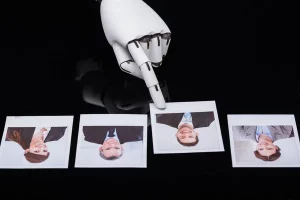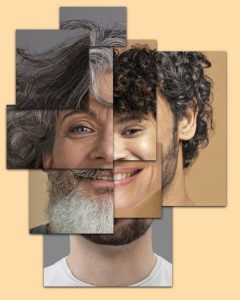As artificial intelligence (AI) advances, the ability to generate and manipulate hyper-realistic images is becoming increasingly accessible. While generative AI technology offers immense potential for creative expression and problem-solving, it raises concerns about potential misuse. To address this challenge, MIT’s Computer Science and Artificial Intelligence Laboratory (CSAIL) researchers have developed “PhotoGuard,” an innovative technique that uses AI to protect against unauthorized image manipulation. PhotoGuard effectively disrupts the model’s ability to alter the image while preserving its visual integrity by introducing minuscule and imperceptible perturbations to images. Let’s explore the breakthrough technology and its implications for safeguarding the digital landscape.
Also Read: Stability AI’s Stable Diffusion XL 1.0: A Breakthrough in AI Image Generation

The Era of AI-Generated Images: An Emerging Challenge
The risk of misuse becomes evident as AI-powered generative models like DALL-E and Midjourney gain popularity for their remarkable image-creation capabilities. From creating hyper-realistic images to staging fraudulent events, the potential for deception and harm is significant. The need for proactive measures to protect against unauthorized image manipulations is urgent.
Also Read: AI-Generated Content Can Put Developers at Risk

PhotoGuard: A Groundbreaking Defense Mechanism
MIT’s PhotoGuard introduces subtle perturbations in the image’s pixel values, invisible to the human eye but detectable by computer models. These perturbations disrupt the AI model‘s ability to manipulate the image, rendering it nearly impossible to alter intentionally. By targeting the image’s latent representation, PhotoGuard ensures protection against unauthorized edits.

The “Encoder” and “Diffusion” Attacks
PhotoGuard employs two distinct “attack” methods to generate perturbations. The “encoder” attack alters the image’s latent representation in the AI model, causing it to perceive the image as random. The “diffusion” attack strategically targets the entire model, optimizing perturbations to closely make the final image resemble a preselected target.
Also Read: EU Calls for Measures to Identify Deepfakes and AI Content
Collaborative Efforts in Protecting Images
While PhotoGuard presents an effective defense, collaboration among image-editing model creators, social media platforms, and policymakers is crucial. Policymakers can implement regulations mandating data protection, and developers can design APIs to add automatic perturbations, fortifying the images against unauthorized manipulation.
Also Read: 6 Steps to Protect Your Privacy While Using Generative AI Tools

Limitations and Ongoing Work
PhotoGuard is a significant step towards protecting against AI image manipulation, but it is not foolproof. Malicious actors may attempt to reverse-engineer protective measures or apply common image manipulations. Continuous efforts are needed to engineer robust immunizations against potential threats and stay ahead in this evolving landscape.
Also Read: EU’s AI Act to Set Global Standard in AI Regulation, Asian Countries Remain Cautious
Our Say
In a world where AI-powered image manipulation poses both opportunities and risks, PhotoGuard emerges as a vital tool to safeguard against misuse. Developed by MIT researchers, this innovative technique introduces imperceptible perturbations that thwart unauthorized image alterations while preserving visual integrity. Collaborative efforts among stakeholders will be key to implementing this defense effectively. As artificial intelligence continues to evolve, PhotoGuard represents a crucial step in striking the right balance between the potential of AI-generated images and the imperative to protect against misuse. With ongoing research and collective action, we can forge a safer digital future powered by artificial intelligence.




